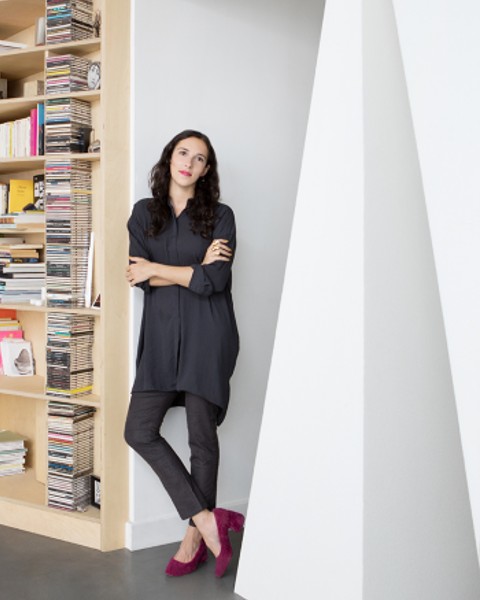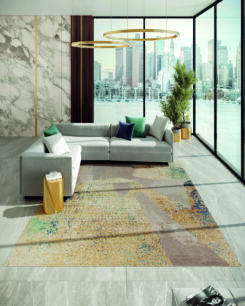Your background is international and ranges from architecture to furniture design. How has it shaped your identity as an interior designer?
I have a background in building architecture, I graduated in project management at the École Nationale Supérieure d’Architecture de Paris-Malaquais in France. During these studies, I followed a course in contemporary art at the École du Louvre, after which I lived in Finland, where I obtained a Master’s degree in design at Aalto University (named after the architect Alvar Aalto, a pioneer of the organic style in 20th century architecture and design). There, I learned to appropriate ceramics, glass and textiles. It is this cross-fertilization of skills and influences in these two countries, renowned for their distinct yet complementary aesthetics, between classical requirements, material experimentation and homage to nature, that crystallized the beginnings of my practice.
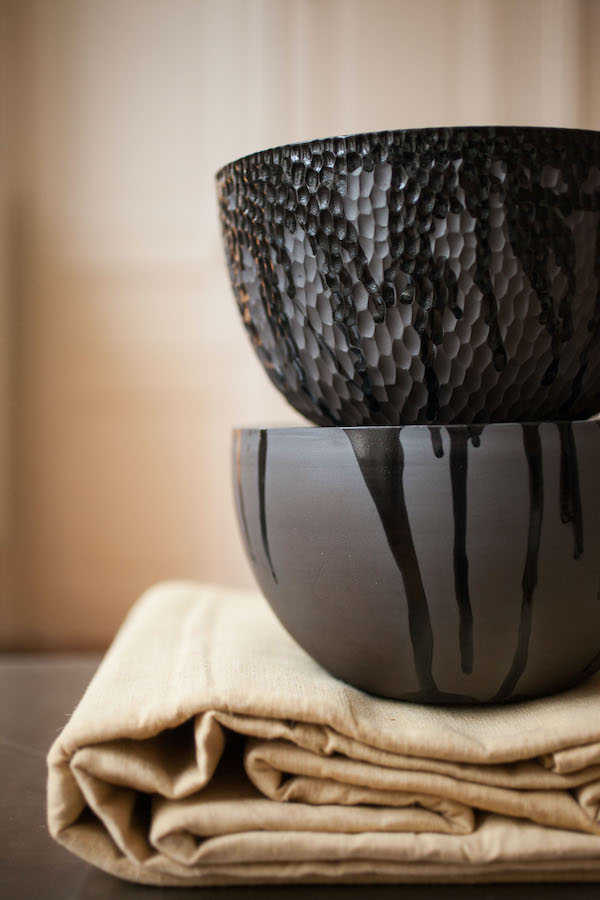
Sophie Dries | Ceramics
What is the basis of your activity?
From the beginning, I wanted to create interiors as an architect and furniture as a designer. Today, my clients are art and design collectors as well as gallery owners and fashion professionals sensitive to the mix of styles.
What did you learn from the architects and designers you first worked with?
The rigour and the line when I started at Ateliers Jean Nouvel, the economy of a company and the constancy of a brand at Christian Liaigre and finally the creation of custom-made furniture at Pierre Yovanovitch. I was lucky enough to be able to participate in the beginnings of the “PY” collection that the latter launched and which is based on artisanal know-how. Private projects and creations often function as showrooms for interior designers. They allow them to propose and sell new prototypes and furniture to a trusted clientele and they then gradually enter the first market of high-end furniture, through their own shop or e-shop or galleries specialising in collection design.
How do you manage to integrate craft into your creative process?
The relationship with craftsmanship that I cherish comes first from my time spent in Finland and then during my travels, where I approached the works of the great masters of architecture and design (Alvar Aalto and Mies van der Rohe), with a global and concrete mindset: the relationship with the landscape and those around us; the direct relationship with craftsmen. When you leave architecture school, you often know what to think but not how to build. My experience has taught me how to define a project but also how to execute it to the nearest millimetre, even from a distance, for a client located on the other side of the planet. The design but also the consistency in the work is very important. It is this balance that allows me to experiment with artisanal ways of doing things.
What was one of your most important discoveries?
In the Balearic Islands of Spain, I was lucky enough to discover the villa Can Lis, on the island of Majorca. One of the latest projects of Danish architect Jørn Utzon, the man behind the famous Sydney Opera House. Built in 1972, the house has since become a residence for architects from all over the world, who can take the time to think and create in it. And for good reason, it is very inspiring. Like Eileen Gray’s Villa E-1027 in the south of France, this building clings to a cliff, facing the sea. Inside, white concrete and terracotta predominate in a simple and radical exercise in style. Everything has been thought out in an original way, the furniture is built in… The architect has proposed his own interpretation of traditional Mallorcan construction techniques.
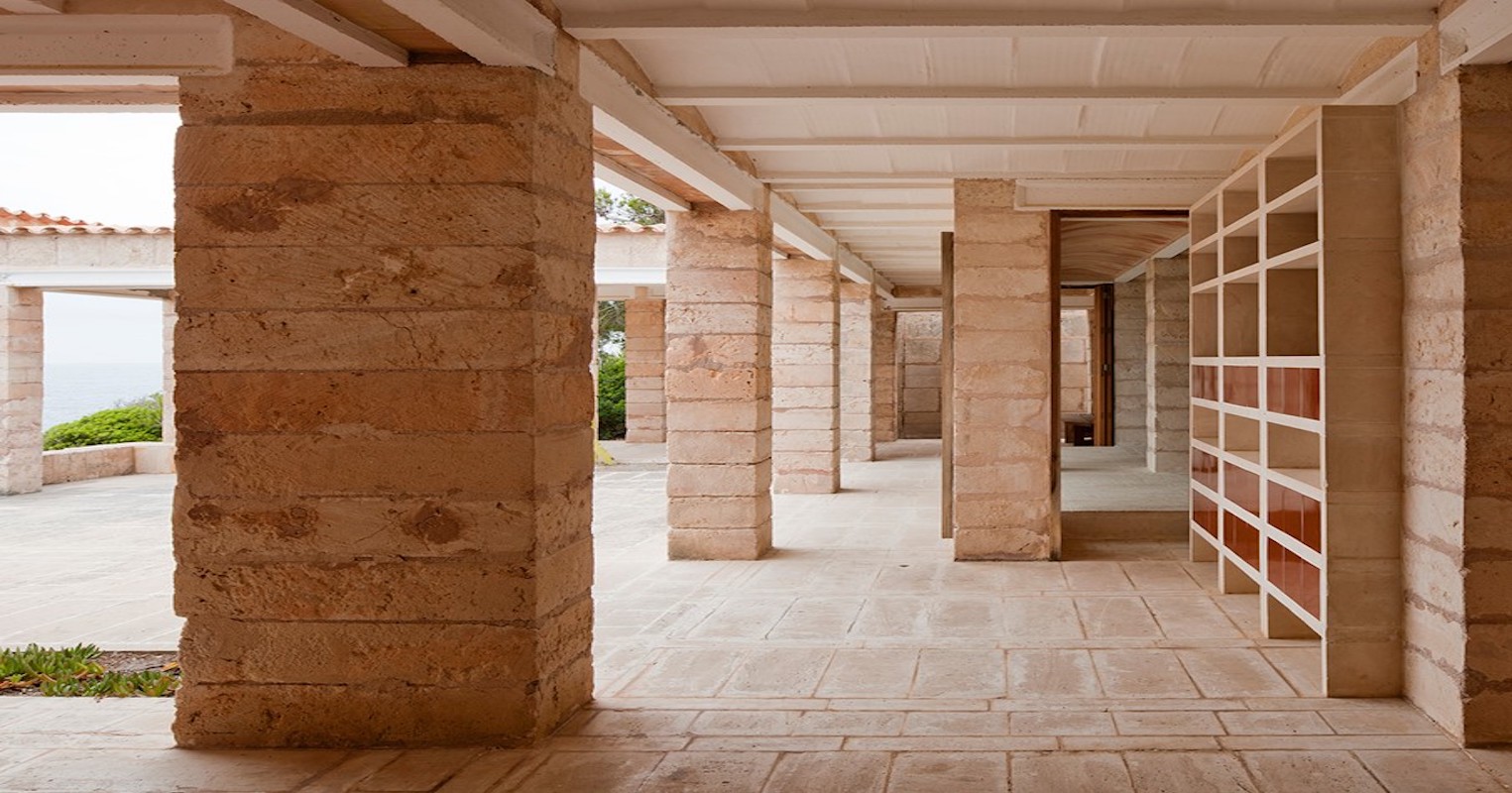
Utzon Foundation/Photo: Torben Eskerod | Villa Can Lis
How did this inspiration translate into your work?
I imagined the Traces carpet after a research stay in this Villa which honours archaic forms because, in history, the carpet is considered to be one of the first movable objects dedicated to the home. To carry out this project, I approached the German Jan Kath factory. The result is a mixture of grey matte wool and gold shiny silk with marbled patterns inspired by the walls of the Villa and the passage of time: alteration of colour, cracks etc. This carpet follows a collection of ceramics that I have created on the same principle.
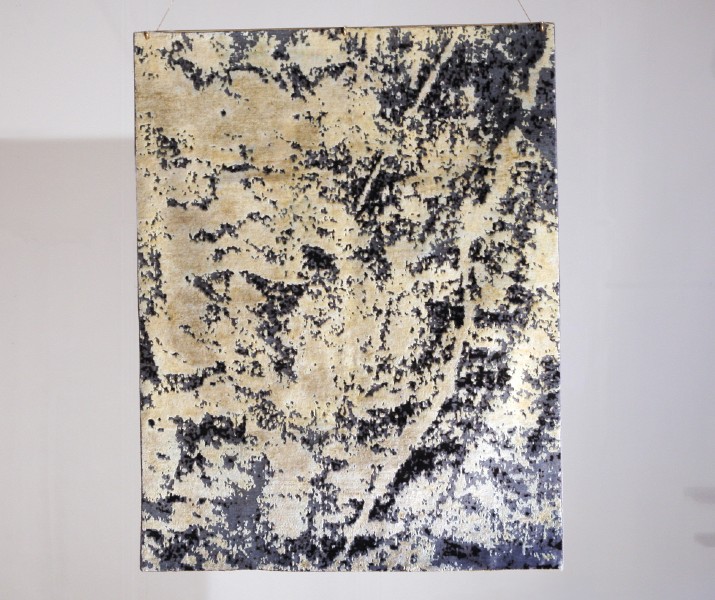
Sophie Dries | Traces rug, Nilufar Gallery
You live in Paris and Milan. What do these two cities mean to you?
I opened a second design studio in Italy to be closer to my Italian contacts and to have the freedom to experiment. There, I am represented by the Nilufar brand. It includes Nilufar Gallery, its main gallery in the centre of Milan, and Nilufar Depot, dedicated to the extraordinary design collection of its founder Nina Yashar and to major exhibitions. The Giustini/Stagetti gallery offers my work in Rome. I love the deeply local, traditional and international spirit of these cities, where the world meets, like during the Salone del Mobile or at the Villa Medici. For one week a month, I produce in Italy. I go to Carrara (for marble), Murano (for glass), Puglia (for papier-mâché) and Calabria (for textiles). On weekends, I like to go to the Italian lakes.
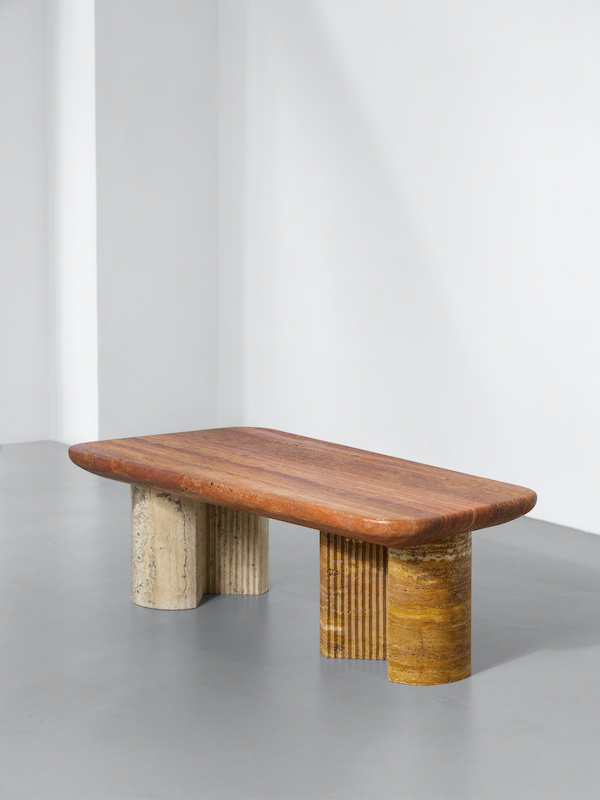
Sophie Dries | Polychroma Columna table, Giustini/Stagetti
What are your projects in relation to Italy?
A range of candles and home fragrances developed with a nose and encapsulated in Murano glass. It will soon be presented on Nilufar’s Picked by Nina digital exhibition and sales platform.
What does the collectible design bring to you today?
An open door to honest creation, a ticket to go further in the design and manufacture of objects that will then be in recognised collections, and an inspiration for industrial processes. The coloured marble stone, which I developed with the Belgian company Van Den Weghe and presented at the Collectible fair in Brussels, was patented, for example. My work of this type is also an opportunity to propose new combinations. My line of sculptural chandeliers combining blown glass and paper for the Austrian brand Kaia is a result of this. Working off order also allows me to offer a high level of craftsmanship because the time and means are multiplied tenfold.
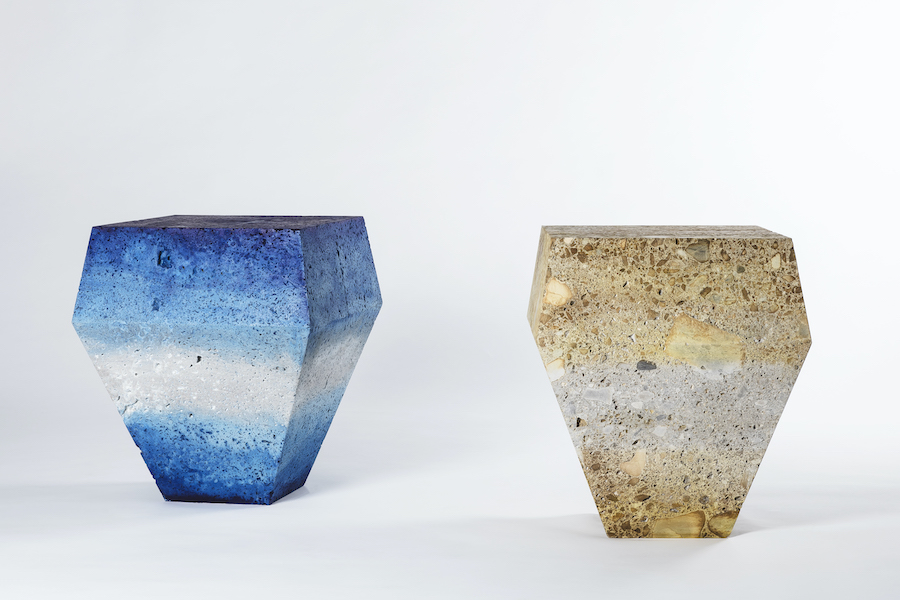
Van Den Weghe/Photo: Piet Albert Goethals | Marble shades
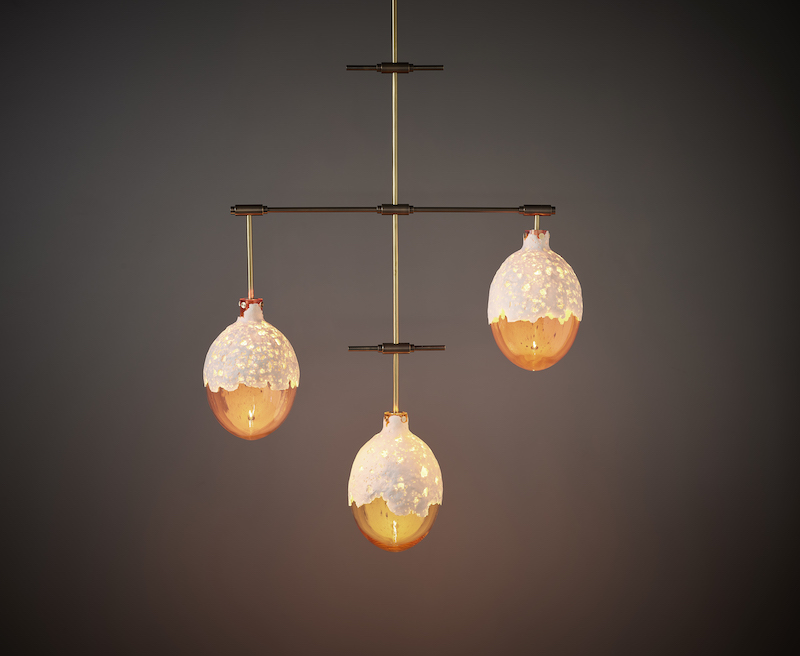
Sophie Dries | Glow chandelier, Kaia
Your customers are in France, Italy and even Australia. How do you move between these different cultures?
I remain faithful to my identity, which is certainly foreign-oriented but remains Parisian, as I mainly live and work there. Since the opening of the first address of my architecture agency in 2014, Rive gauche, many foreign clients have come to seek me out in order to develop projects with a French tone. I recently delivered interiors for the high-end View Hotels chain in Brisbane, Melbourne and Sydney in Australia.
So how does a Sophie Dries project come about?
I always think in terms of the context, whether it is urban, more specifically Haussmannian in Paris, a loft in an old industrial building, a flat in a 1970s tower block… The way in which the users of these places live or intend to live, in the case of a new construction, is also essential. Each interior design project is in a way a portrait of the client. My work then focuses on the search for materials and the feeling that is desired on a daily basis: a cocooning spirit, purity… Finally, there is the experimentation at the stage of designing custom-made furniture. At each stage, dialogue is key. The final touch is sometimes the integration of vintage furniture, in connection with pre-existing furniture and an art collection.
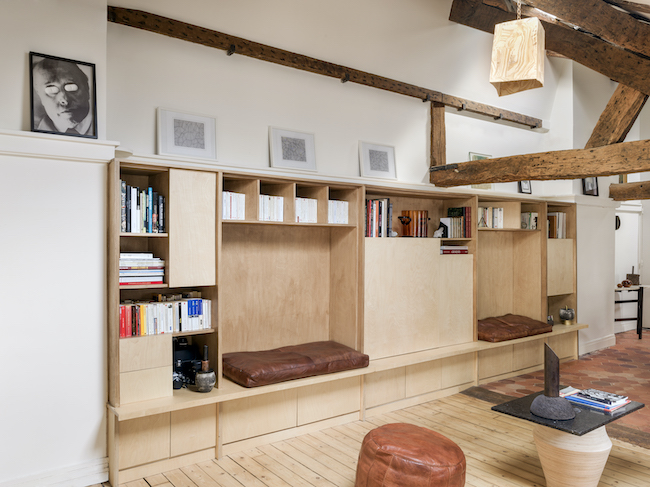
Sophie Dries/Photo: Stephan Julliard | Interior, Rue de l’Université, Paris
You often cite Arte povera as an inspiration for your work.
The artists of this artistic movement, which originated in Italy in the 1960s, are particularly inspiring to me because the handwork of materials and the relationship to nature and to found objects are central to it and are treated collectively. It influences me in a theoretical and concrete way.
What are your favourite materials for renovation?
Mostly natural materials because they are beautiful and environmentally friendly in essence and above all they age better. I don’t believe in making disposable projects. It is by combining sometimes antagonistic materials, precious and non-precious, Italian glass with rust for example, or burr wood with cement, that I create paradoxes that are interesting to the eye and sustainable products. Some of my latest creations in this sense are the blown glass pendant lights with mica inlays and a stone-encrusted mirror, both sold by Nilufar. The latter was presented in the historic setting of Milan architect Gio Ponti’s villa L’Ange volant for the Genius Loci travelling exhibition programme. Finally, the florist Arturo Arita’s shop with its functional plaster decoration was inspired by the rocks of the Mannerist caves in the Roman parks.
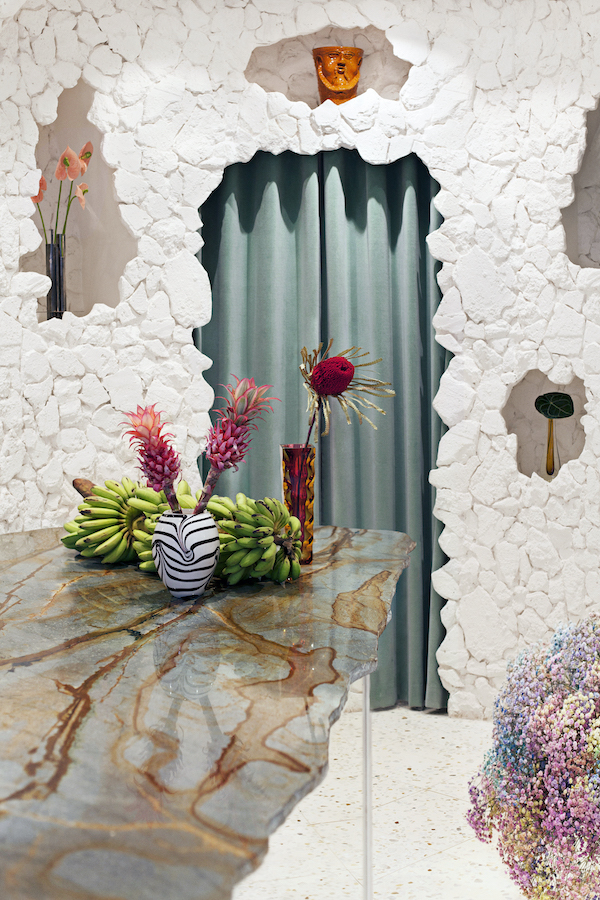
Sophie Dries/Photo: Brice Chatenoud | Arturo Arita flowershop, Paris
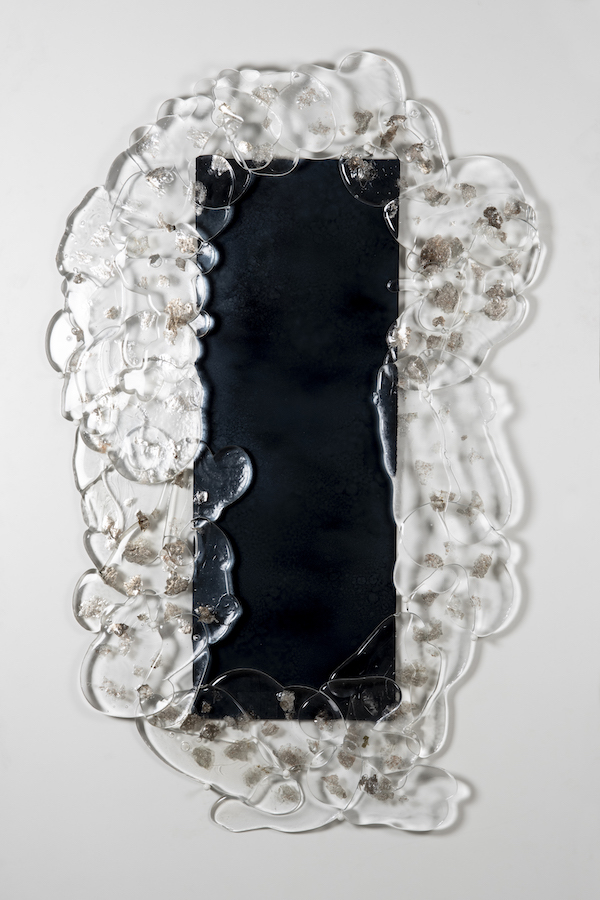
Sophie Dries/Photo: Daniele Iodice | Levitating Alchemia mirror
What do you consider your signature achievement to date?
The main shop of women’s shoe designer Michel Vivien in Paris, which includes a large wooden corrugated wall and a selection of sculptures and vintage furniture. This designer’s world is close to mine because it aims to last through the years and not go out of fashion.
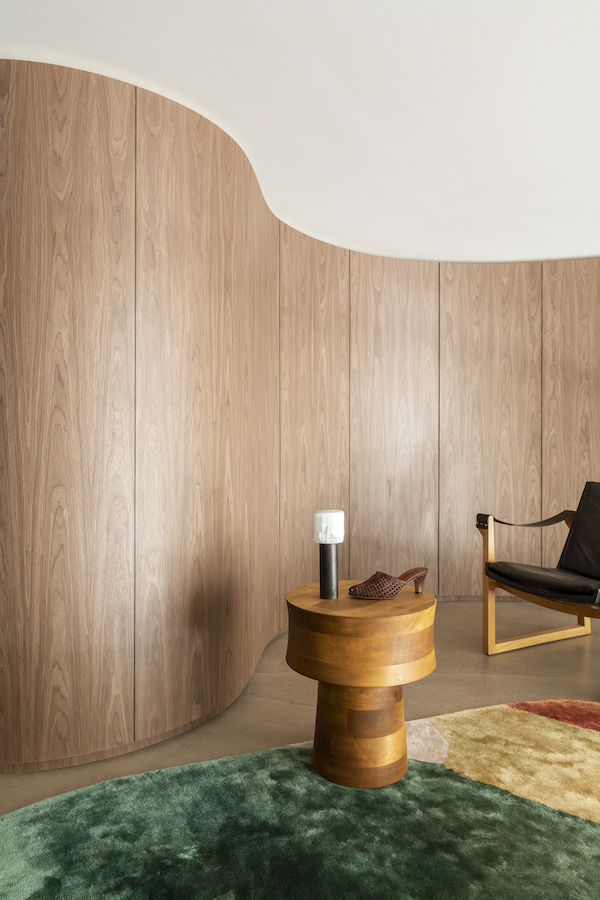
Sophie Dries/Photo: Valerio Geraci | Michel Vivien flagship store, Paris
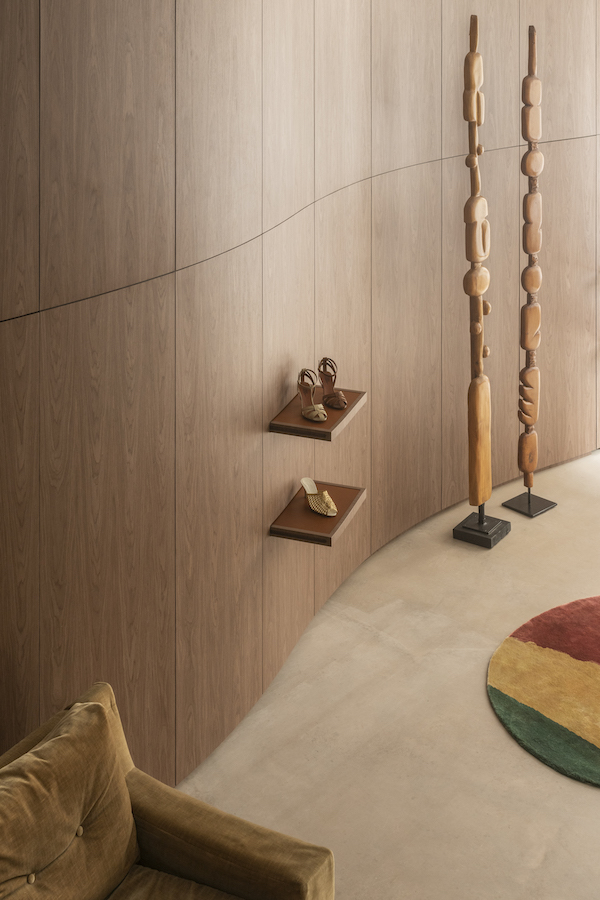
Sophie Dries/Photo: Valerio Geraci | Michel Vivien flagship store, Paris
